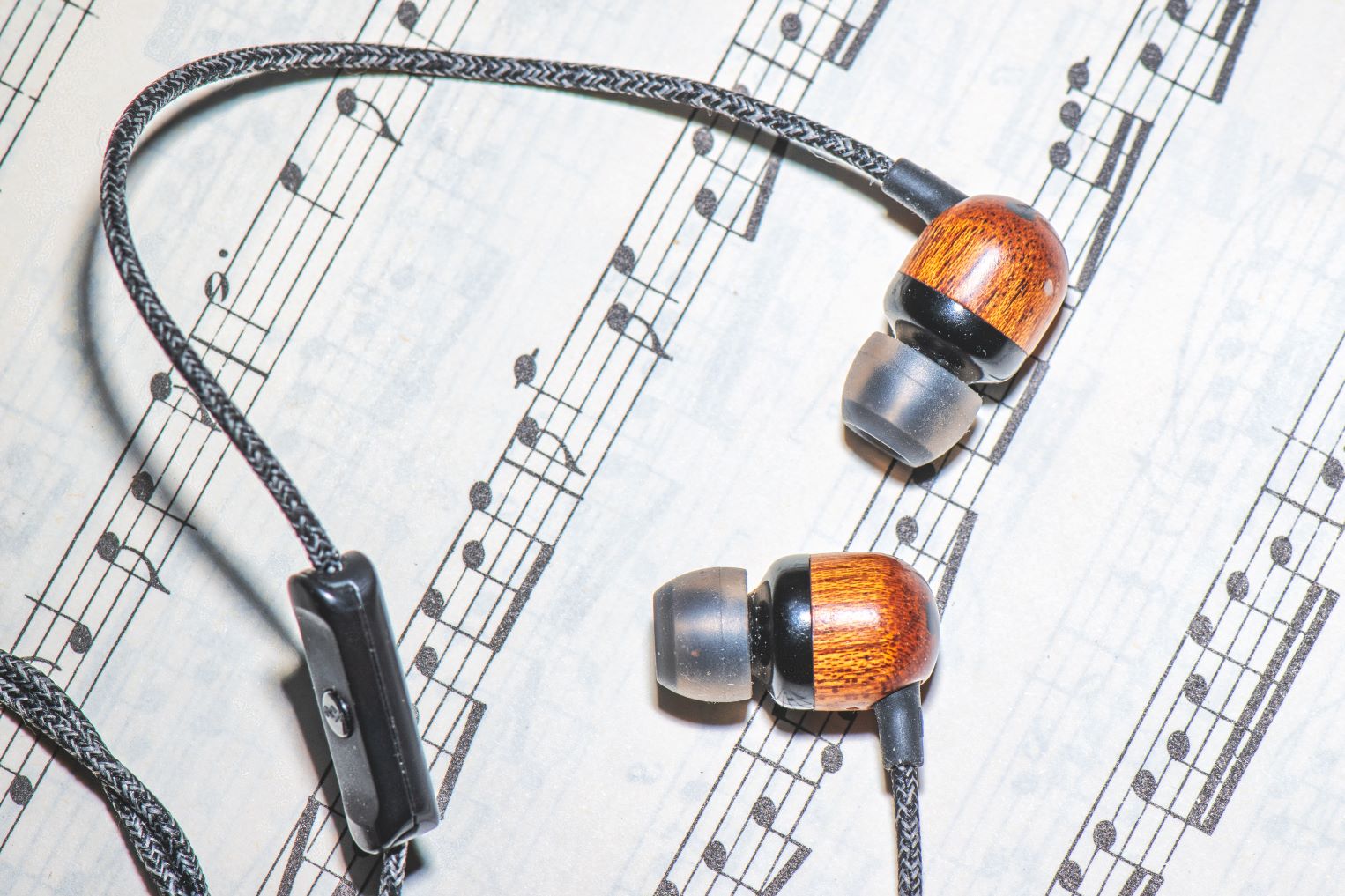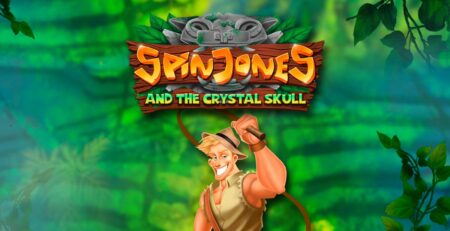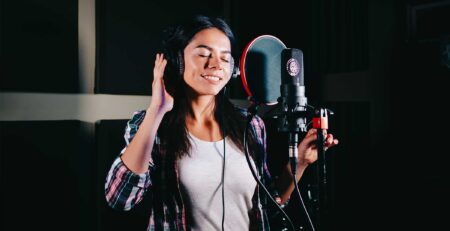Exploring the Creative Process of Game Trailer Music
Providing the right creative solution for a game project that needs the perfect Music for its presentation trailer is a challenging task. Along with deep understatement from both parties, a trusting relationship needs to be built. Up to this moment, key members from the Dev team might have been directly in control of the game design, concept, art direction, tone, story, and other key elements that will build the Game’s identity and appeal. But it is now, when the game will be presented to the potential audiences, that control needs to be trusted to a new key role: the Audio Director, the Music Composer, or those who will work on the Music identity of both the trailer and the game.
Just as the maieutic method through which Socrates extracted the truth from his conversational partner by asking the right questions, an Audio expert needs to settle the communication conditions thanks to which a Music piece and a Music Identity will be born to fit the creative vision from the Game Developer. Iteration after iteration, the creative process might go both ways, and feedback from Audio experts might be useful to improve key elements of the Game Trailer or the Game itself.
Building relationships and creating music
To better illustrate the process, we requested one of our clients to share some insights on the procedure and communication that gave birth to the Music of its Game Trailer.
Ark One Studios’ Audio Director and Main Composer, Juan Schweizer, led the Artificial Wings (AW) Music Trailer Project. He delved into a collaborative journey with Nori, from Starry Seaweed Game Studio, a Taiwan based Game Developer.
In Juan Schweizer’s words:
“Together, we embarked on an unconventional approach to crafting the trailer music, drawing inspiration not so much from the visuals but more so from the concepts and ideas residing in the game developer’s imagination, since the trailer would be created only after the music was done.“
What follows is a testimony of their exchange, along with some original images that were used to communicate the concepts. To better understand the creative process, the music mockups composed for every step are presented too. At the end of the process, you will find the final version of the trailer music.
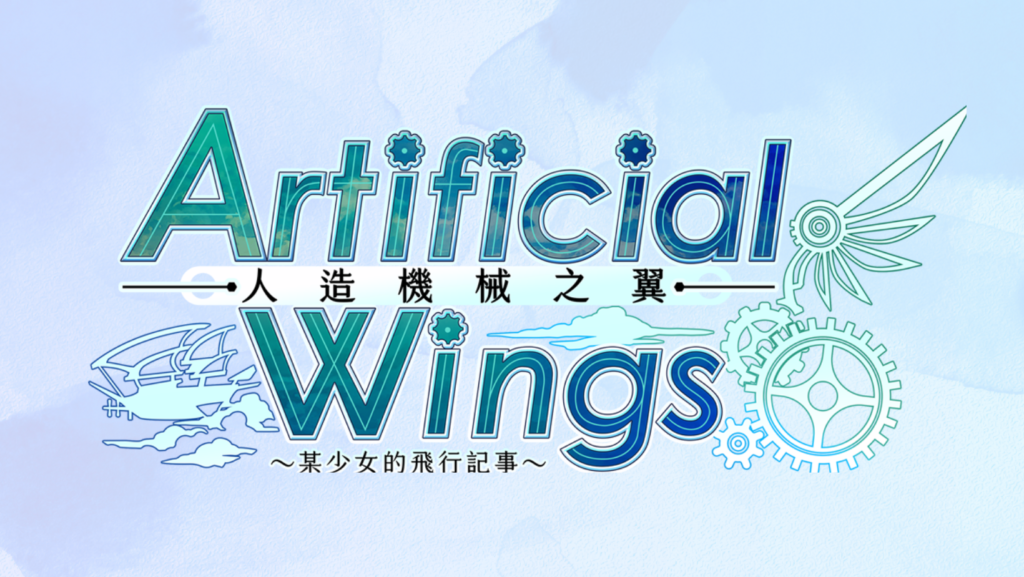
First meeting and starting point
In their initial conversation during the pandemic at a virtual Tokyo Game Show, our Audio Director and the client discussed the developer’s need. The client was working on an ambitious follow-up to their previous game (Grayscale Memories), titled Artificial Wings (a jrpg still under development). They had listened to our music scoring samples, and knew what was wanted: something akin to Promise from the Deep.
Juan Schweizer, referring to the project:
“The task was clear: The Dev needed music for the trailer she was about to create. An interesting thing here is that, contrary to common practice, she had the trailer completely planned out but no visuals were created yet (except for concept art and some in-game footage). The plan was to first create the music based on the different moments the trailer would feature and only afterward create the visuals.”
The First Approach
The structure the client had in mind was as follows:
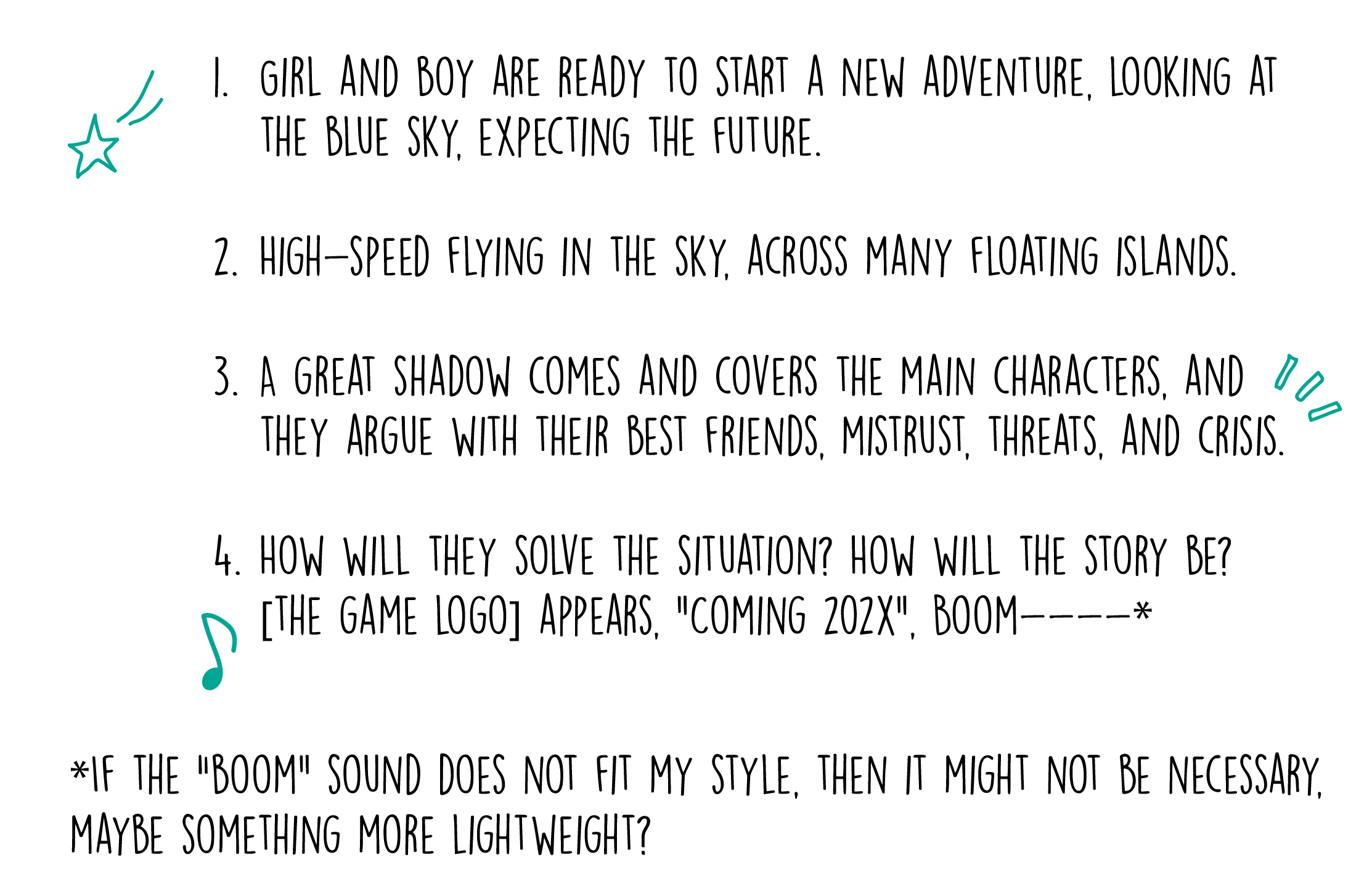
The client had also shared a playlist featuring music that was interesting to her for different reasons. Further conversations made clear they loved female vocals. They could fit the game well considering the weight female characters carry on the narrative. At this point, though, it was clear that including female voices might not be in the budget range.
This is the first mock-up. Just beneath, time lapses are explained by Juan.
Ark One Studios · AW – Trailer Music – Mockup 1
- 0:00 – 0:46:
“As the strings are softly bowed, the clarinets are blown at a different tempo, with notes that help convey a magical feeling. In 0:14, what would later become the main musical motive arises in the form of Celli, then echoed by woodwinds (and piano). I had no idea of the length of this part, so I just ran with it. - 0:47 – 1:03:
“You can already feel they took off and are soaring through the clouds. I already had the sound, but I didn’t have a melody. After trying a few things, I got up from my piano to go do something, and it struck me: I ran back to the piano and started playing, and it was like my hand already knew the notes and harmony… the notes were played without requiring attention from my mind.” - 1:04 – 1:20:
“The melody mentioned above is played by oboes first, and finished by strings, who take care of dimming the light so we can afterward move into the darkness.” - 1:21 – 1:39:
“Now the darkness could be approached in tons of different ways, and at first I thought it was like a big cloud below, which brought darkness and an almost palpable tension. A flute in G would help us reach this idea, along with low-pitched hard brass.” - 1:40 – end:
“Afterwards, the logo should fill the [future] player with expectation and mystery, and the dark cloud should clear away. Let us bring back the main motive in the form of woodwinds, harmonized in a triumphant and contrasting way.”
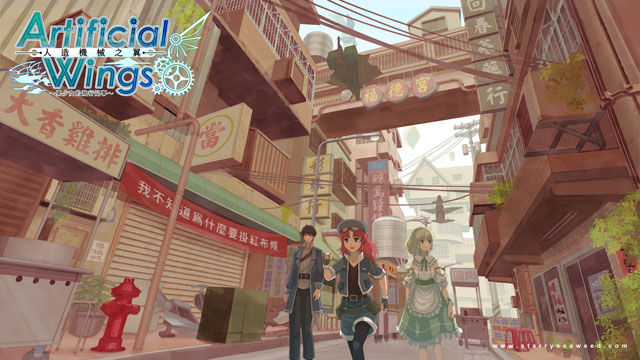
The Second Approach
After listening to the mock-up, the client came back with feedback. The melodies were perfect, but we needed to adjust the following:
- The introduction should last around 10 seconds.
- We needed faster percussion for parts A and B.
- And as you probably guessed already, the tension in section C should have a lot more energy and be longer.
After this feedback and a better understanding of the plot, our creative intention was to try something faster for section C. Something constantly changing as if lots of things were being unveiled, in crescendo until it would all explode with the logo. In the second Mock-up, from 0:46 until the end when the logo appears. Please note that this time, after a rush of energy, so you’ll hear first a valley, only to take us to the final energy outburst (imagine the logo appearing at 1:24-1:34).
The Third Approach
Art allows us to convey abstract concepts that are, often, not that easy, or even possible, to communicate with words. That’s why Nori, the Dev, started using art to communicate better what she had in mind.
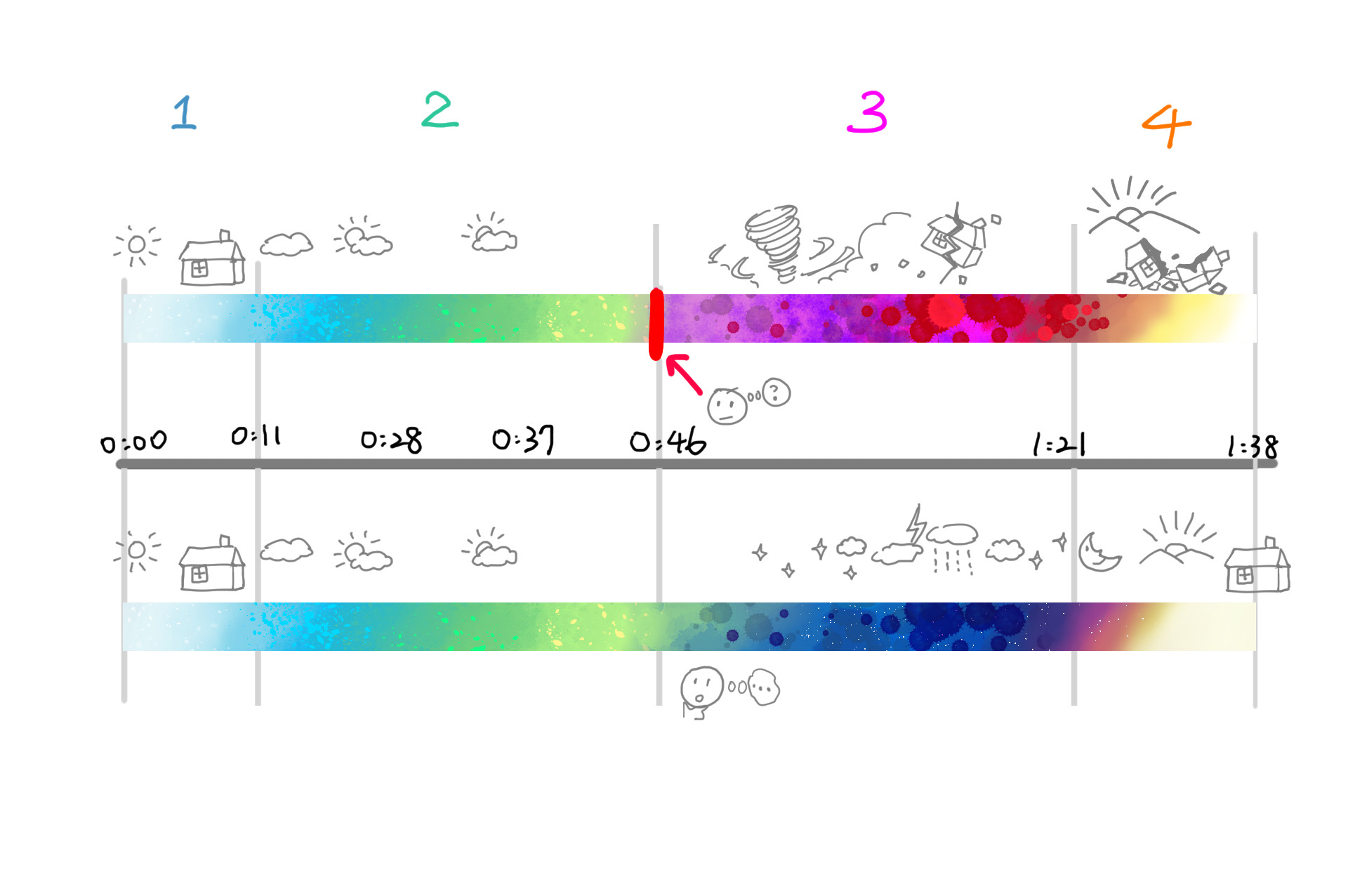

In the client words:
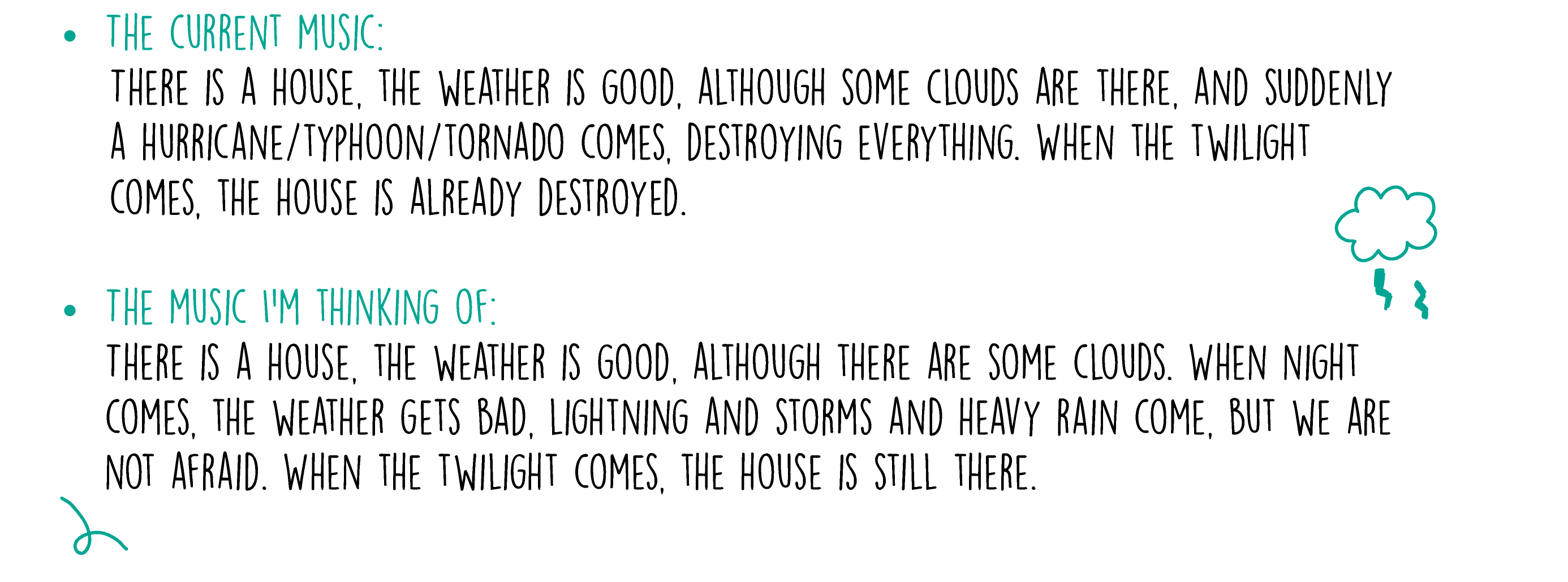
Following this feedback, a new Mock-up was made. In this one, starting at 0:46 now you’ll hear the slow appearance of darkness, accompanied by some epic emotional background music, but it will fade before getting to the Logo moment since we were only trying this new approach. The darkness introduction (0:49-0:56) is done by re-utilizing the main motif (0:02-0:09).
In addition, note that there was a modulation added in Section C at 1:13.
The Final Version
At this point, the client was happy with both the melody and transition in Mockup 3. Section C was still a bit slow-paced and heavy for what she had in mind though.
Juan mentions that at until this point, there was a misunderstanding and he had thought the flight ended when darkness took over.
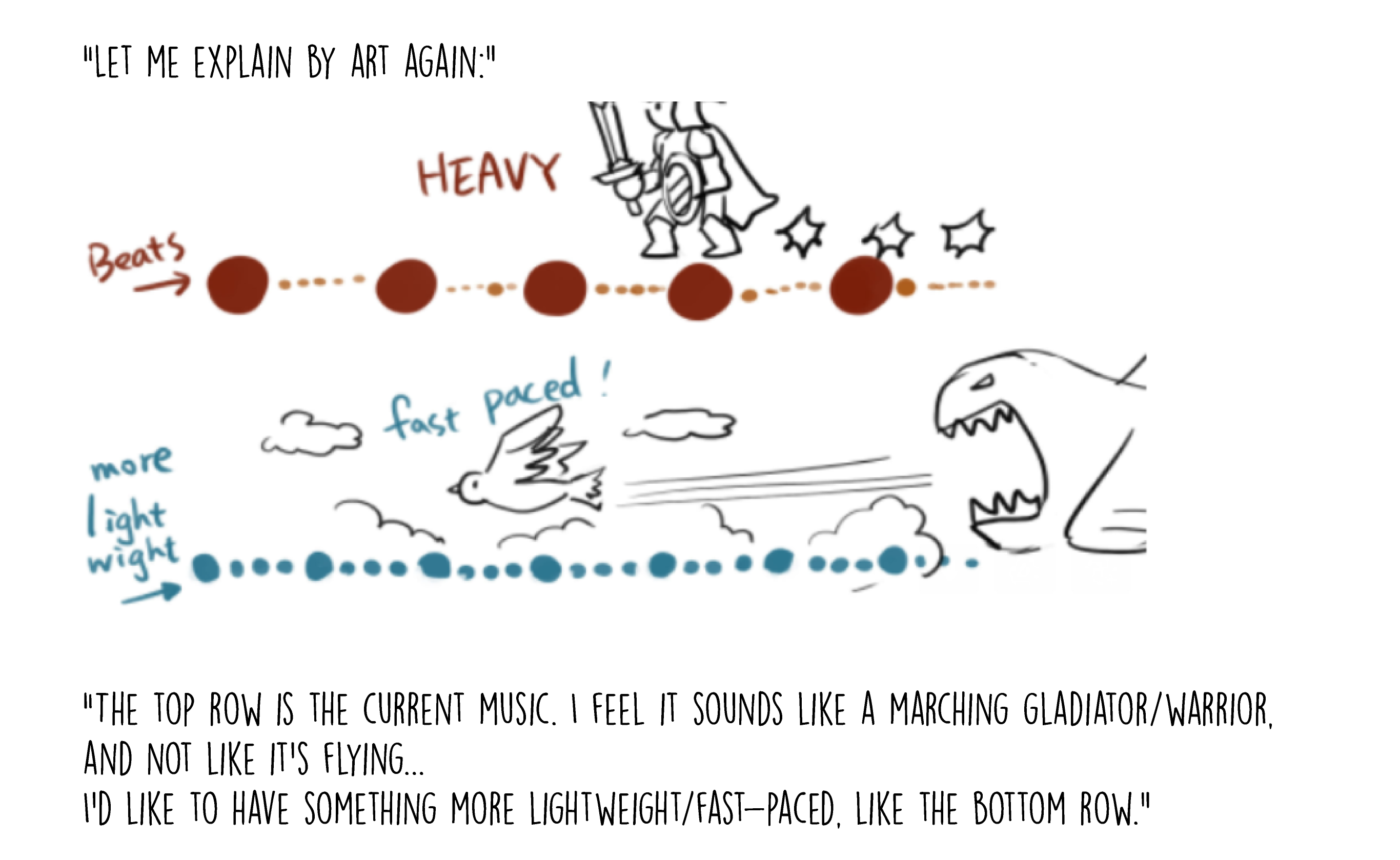
Then, the client shared some important feedback in the following form.

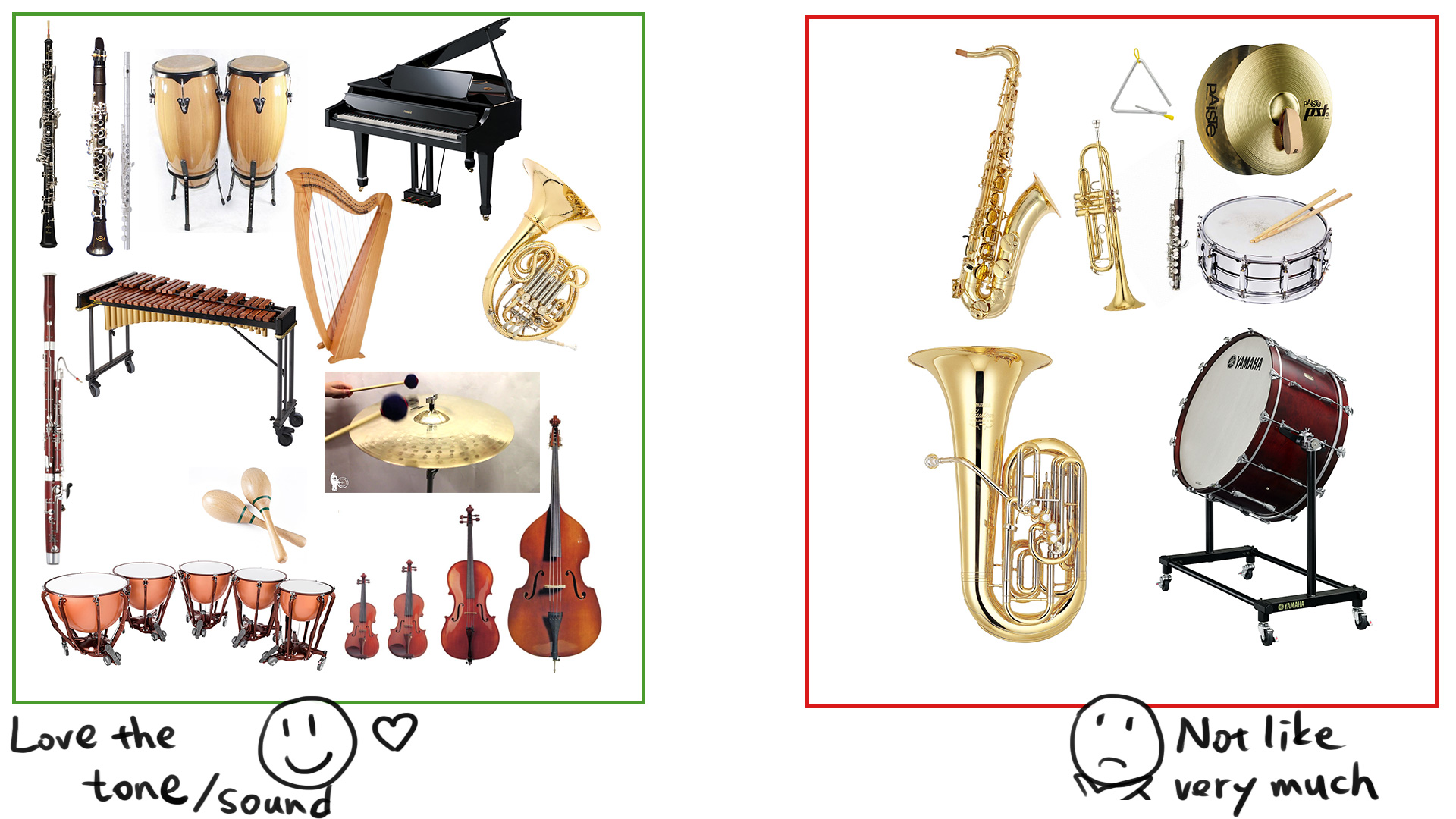
Finally, more feedback, a bit more specific:

So with all of this information, Juan was ready to score what would become the final version. A full description of each section is this:
- 0:00 – 0:11: Full of expectation, we listen to the main motif for the first time, played by Celli.
- 0:12 – 0:27: We rise to the sky, with the help of a fast woodwinds and strings scale, followed by slow ascending movements by the low-brass instruments.
- 0:28 – 0:36: The oboe introduces the main melody, accompanied by fast-paced and light-weighted percussion instruments.
- 0-37 – 0:45: The strings take up the melody, preparing the terrain for the gray clouds ahead. Also, a marimba makes sure we keep moving forward.
- 0:46 – 0:56: A distorted version of the main motive, played now by the horns and over a darkened harmony, shows us that dark clouds are covering the sky.
- 0:57 – 1:03: The main melody -played by strings, woodwinds, and a glockenspiel- comes in again to tell us to keep flying forward through the storm.
- 1:04: 1-15: The modulation gives us a boost of energy to keep going, as the trumpets take the melody, to which the strings respond with descending runs. It’s chaos!
- 1-16 – 1:32: Darkness keeps advancing, and so do we. The main melody is played once more (1:19), but now by the trumpets. So the day is the same, the sky is the same, but conditions have changed a lot from our initial calm and expecting moment.
- 1-33 – end: A sudden stop, and it’s time for the logo. Remember the importance of female characters in the narrative? Female voices will be a part of this amazing story, and a little bit of anticipation can be heard as the logo comes in accompanied by no other than the main motif, for the third and last time.

To sum up, the main motif introduces the game and separates the trailer into the different sections the game itself will have, all of them featuring different versions of the main melody.
The Short Version
The long and final version of the trailer is yet to be published, but we already have all the important themes we need for the game (though some more will and have already been created along the way).
A short version of the trailer was published. You can watch it here:
Conclusions
The iterations through which our Ark One Studios and this client created the music for the trailer also meant creating the heart of the music for the whole game. In this process, it is important to reach a deep understanding of the game’s vision, the trailer script, and the Dev’s taste and expectations. Communication needs to be efficiently managed by all means necessary. And each new creative draft needs to feed both in feedback and new creative ideas.

